Our first introduction to Chas Smith came through Ry Cooder. During our cover story interview for the FJ #32, Cooder mentioned Smith’s connection to pedal steel legend Joaquin Murphey and we knew we had a future magazine subject on our hands. What we didn’t expect was just how many great pedal and lap steels Smith owns, the unique instruments he’s created himself or his background as a world-renowned welder and sound artist.
We have a lengthy story on Smith in the Fretboard Journal #34, penned by Adam Levy. When it came to images, photographer Jacqueline Di Milia delivered (and then some). Here are some of the shots she took that didn’t make it into the article and the story behind them.
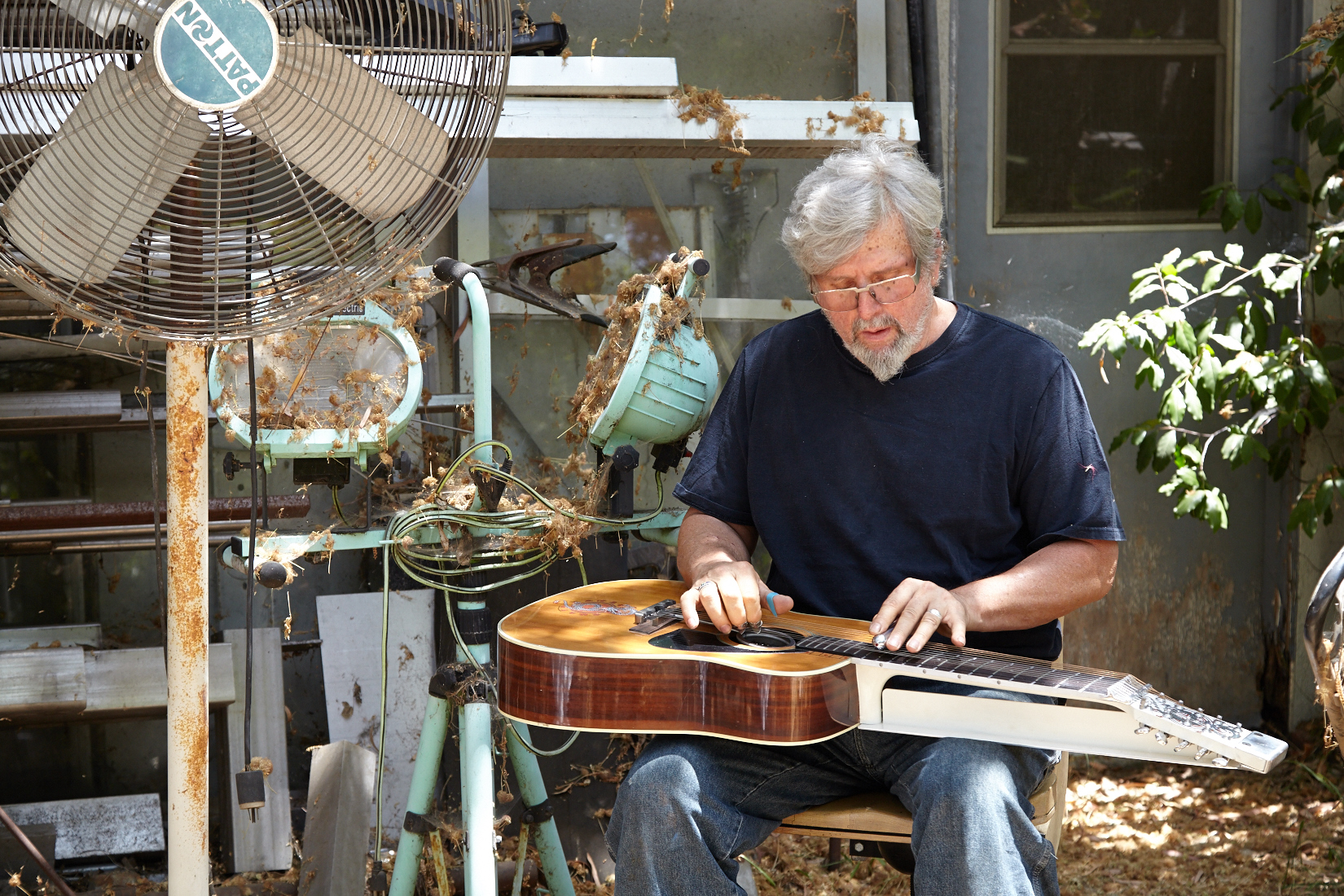
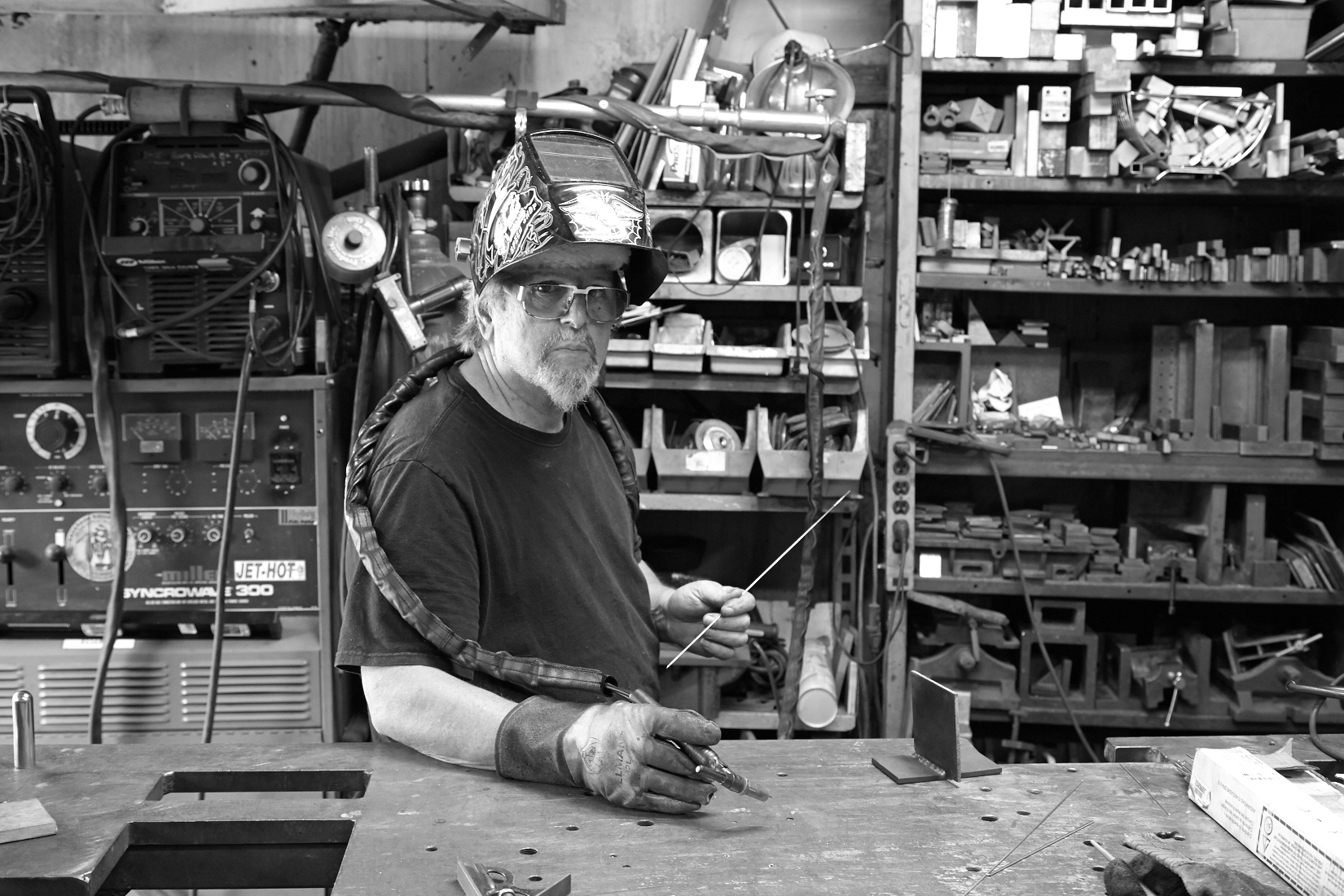
Chas Smith surrounded by his tools of the trade. Visual artists such as Paul McCarthy and the late Mike Kelley have employed Smith to help create their large-scale sculptures.
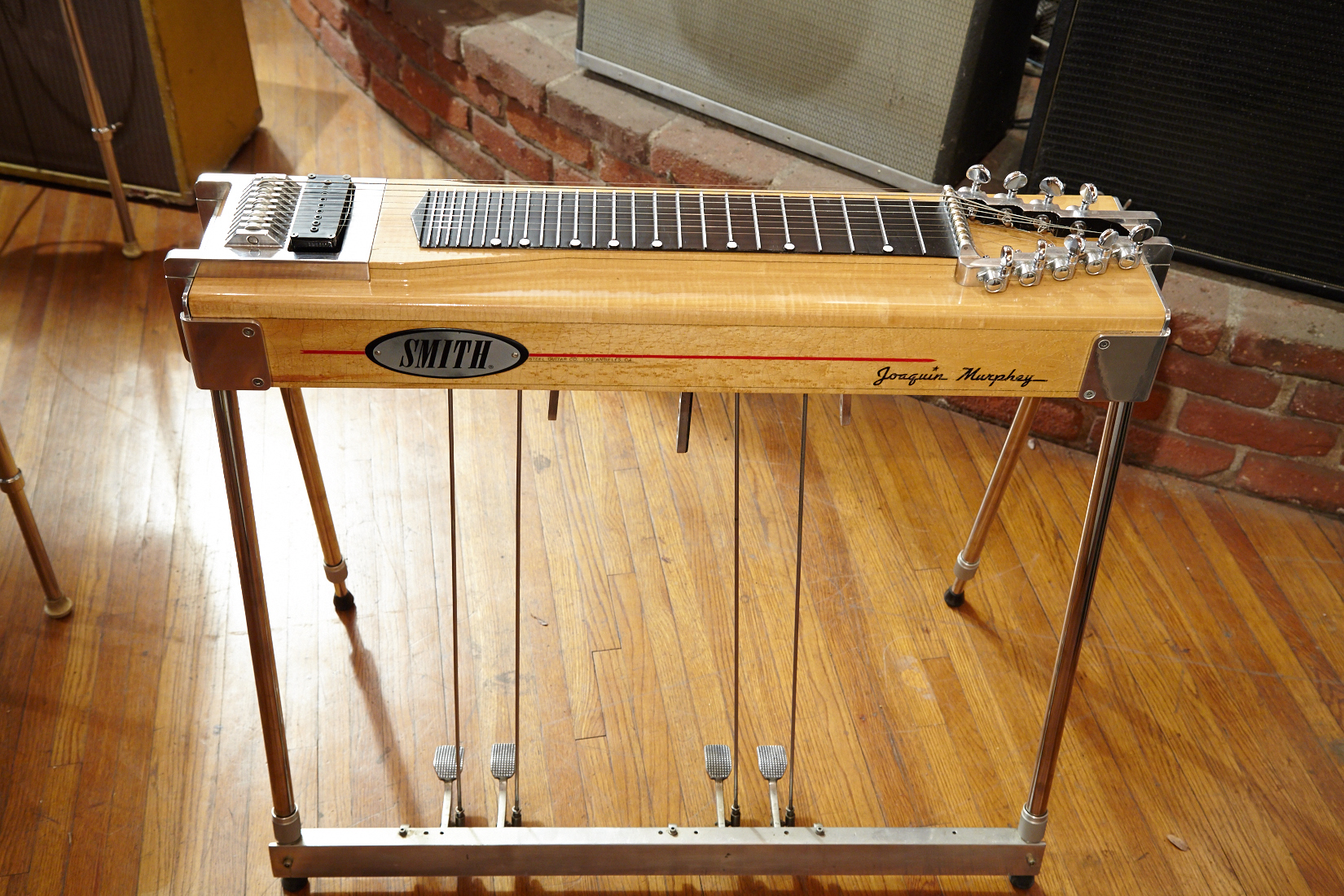
Smith modified this Sho-Bud for his hero Joaquin Murphey in 1996. At the time, Murphey had fallen on hard times and was living in a trailer park; he hadn’t touched a guitar for more than a decade. “This guy had not played in 14 years and I have no hope of playing like that in this lifetime. He had a gift,” Smith says.
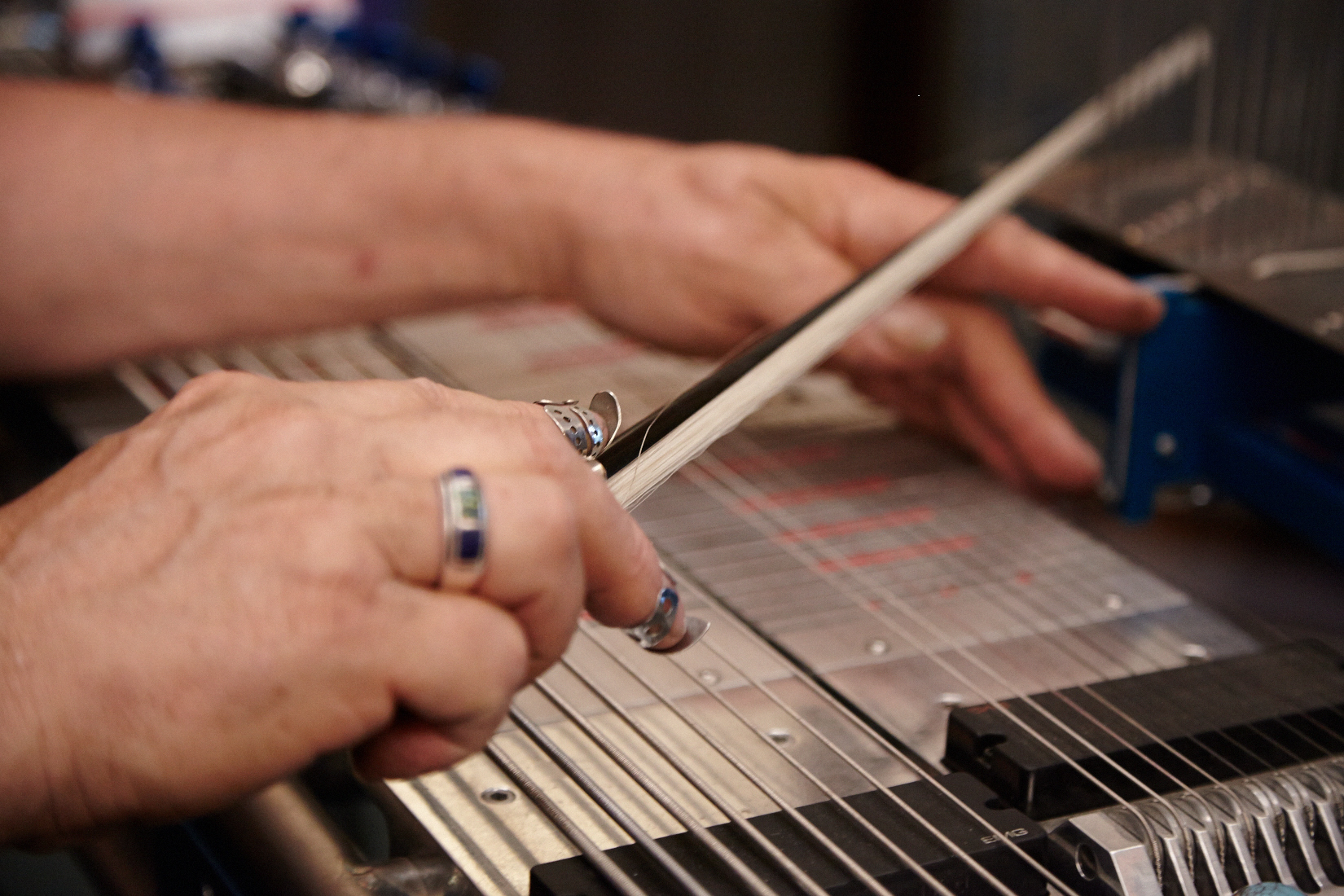
Smith studied with composers Morton Subotnick, Mel Powell and Harold Budd. Though his steels can be heard on numerous Hollywood soundtracks, he also has a solo album of his soundscapes entitled ‘Descent’ (Cold Blue Music).
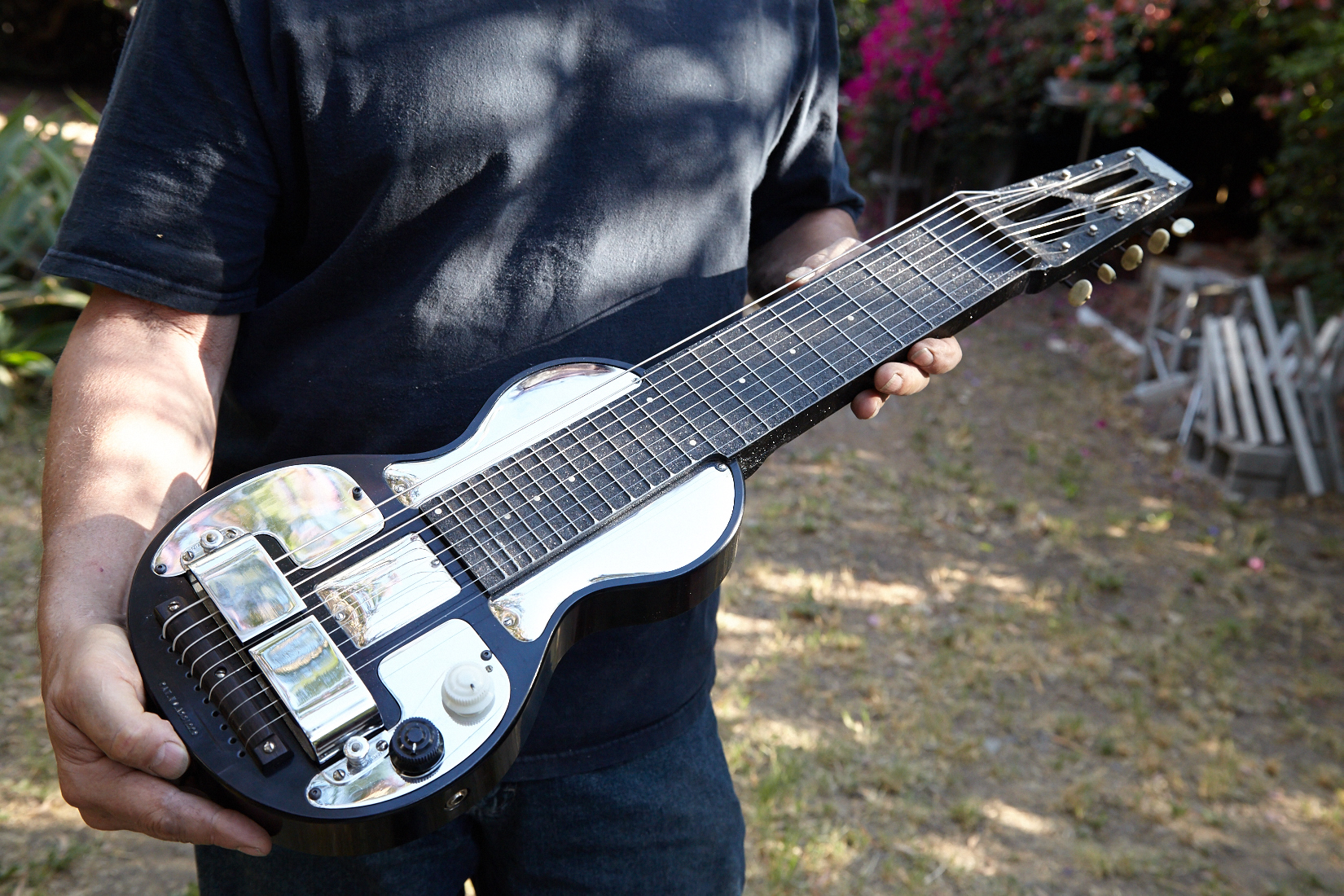
Smith has an affinity for 10-string lap steels. Included in his collection is this pre-war Bakelite Rickenbacker B-10.
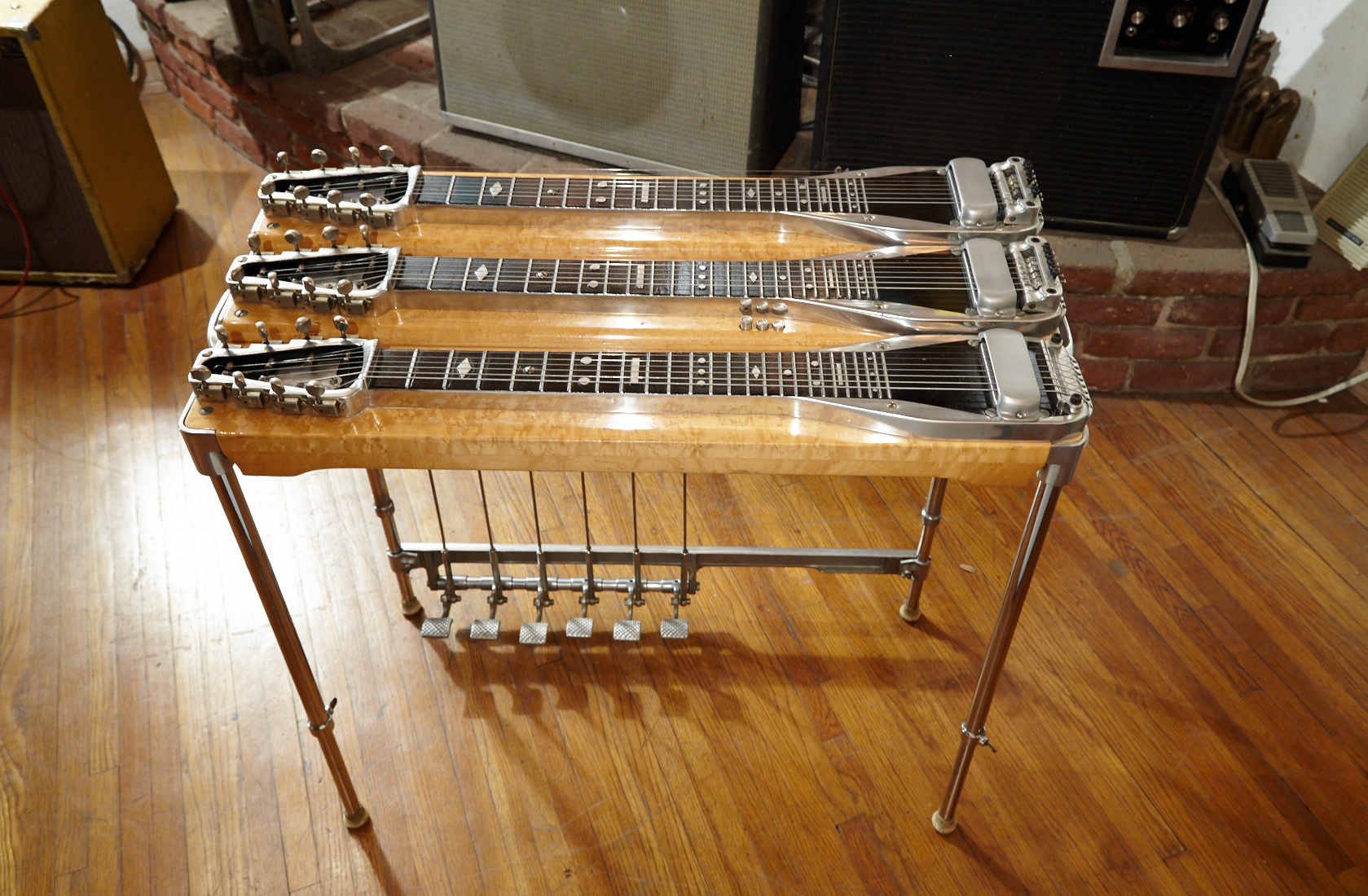
A triple-neck Bigsby pedal steel that was built for Norm Hamlet in 1964. “I bought the Bigsby guitars back in the ’80s before anybody wanted them,” he says.
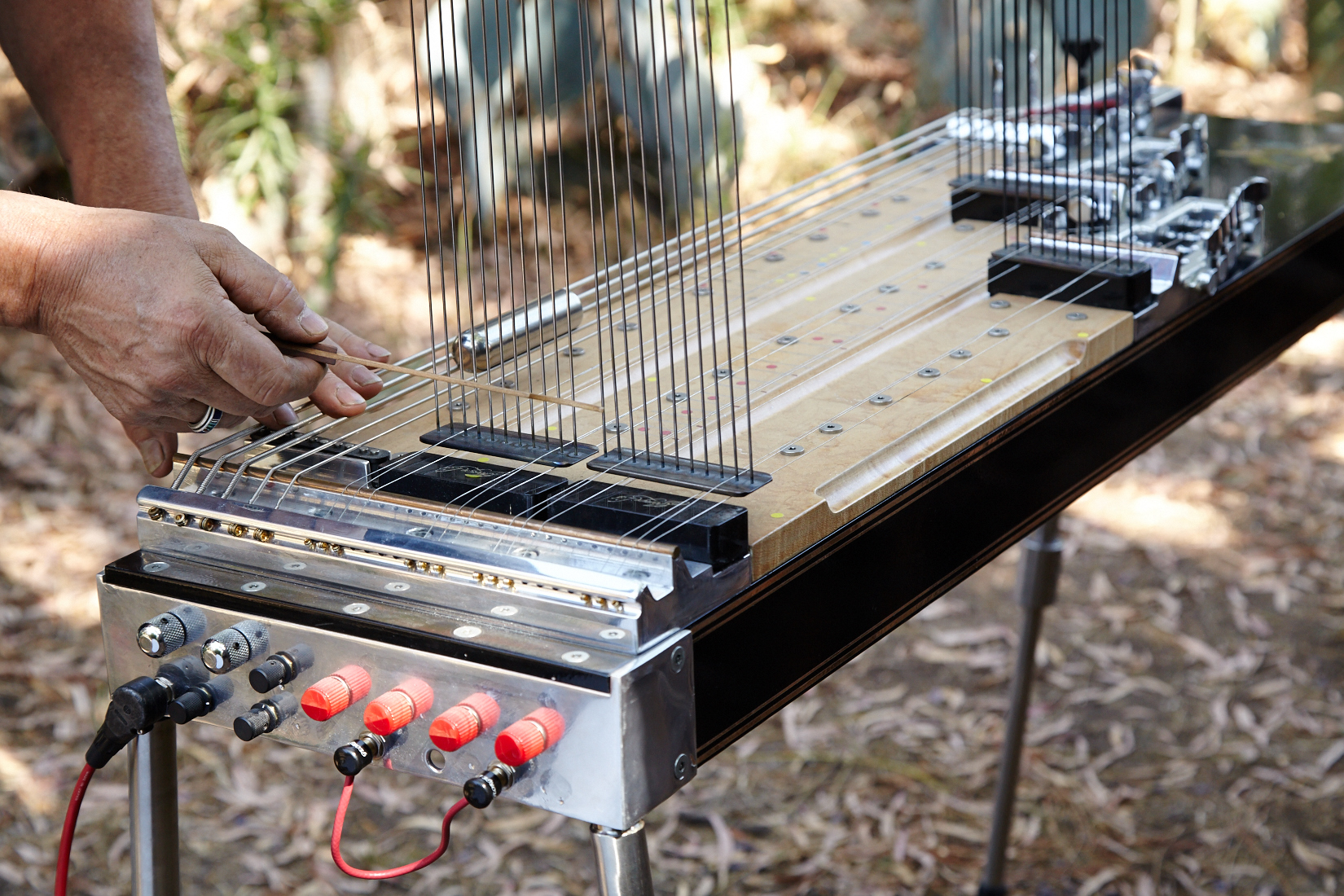
Much of the music that Smith creates requires bowing, tapping and percussive elements. This is Guitarzilla, an incredibly complicated pedal steel that weighs 110 pounds in its case. The pickups are EMG because of their reduced magnetism: Smith often has circular saw blades and metal plates hanging over the instrument and magnet fields could be detrimental (and dangerous).
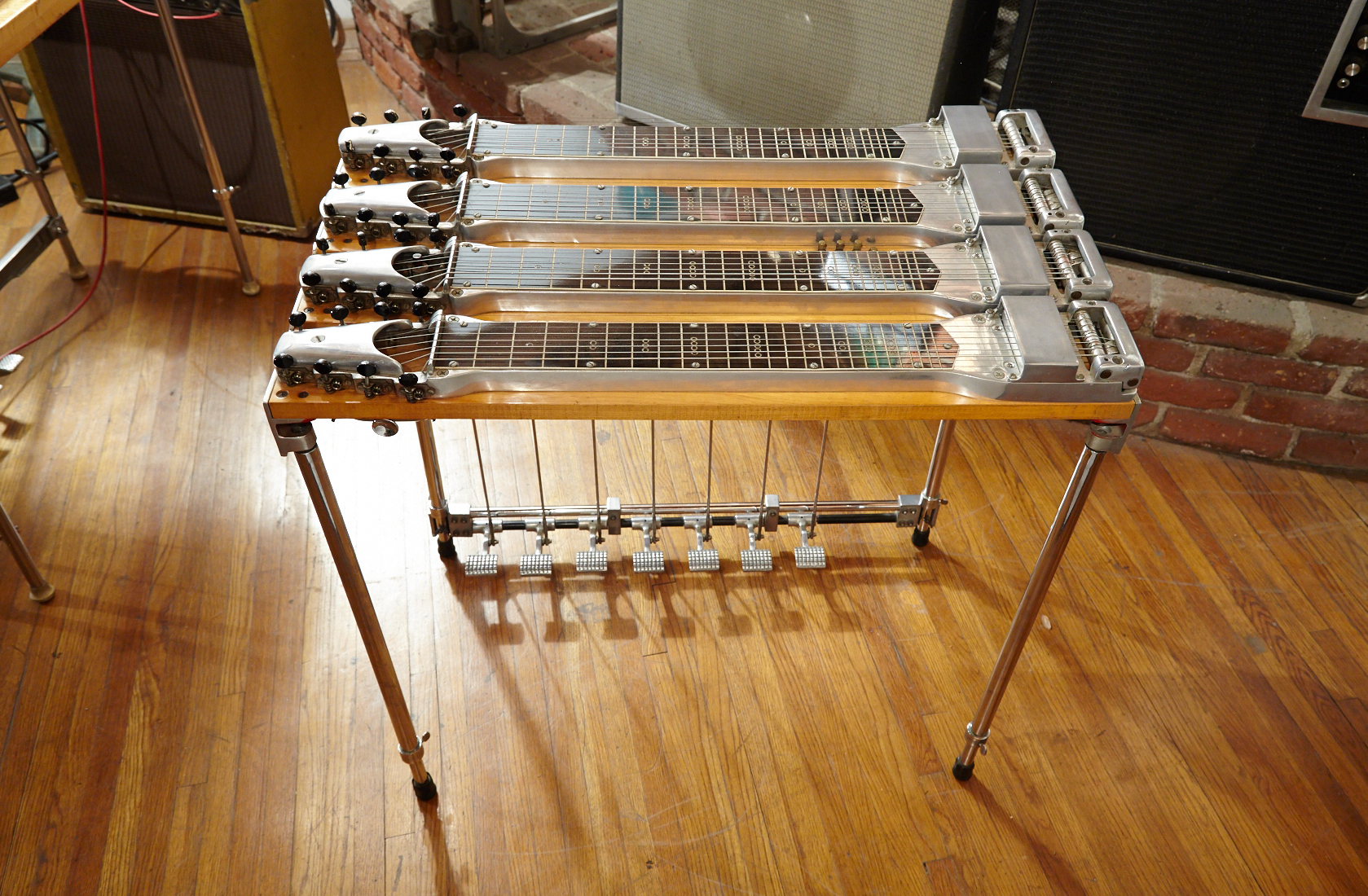
A quad-8 pedal steel built by Chuck Wright around 1959. This particular guitar was used by Jimmy Day (who backed Ray Price) in the ’50s. During this time, Bigsby was building on average just one guitar a month so a handful of makers such as Wright decided to fill the void and make similar looking and performing instruments to meet the demand. Wright would later go on to found Sierra Steel Guitars.
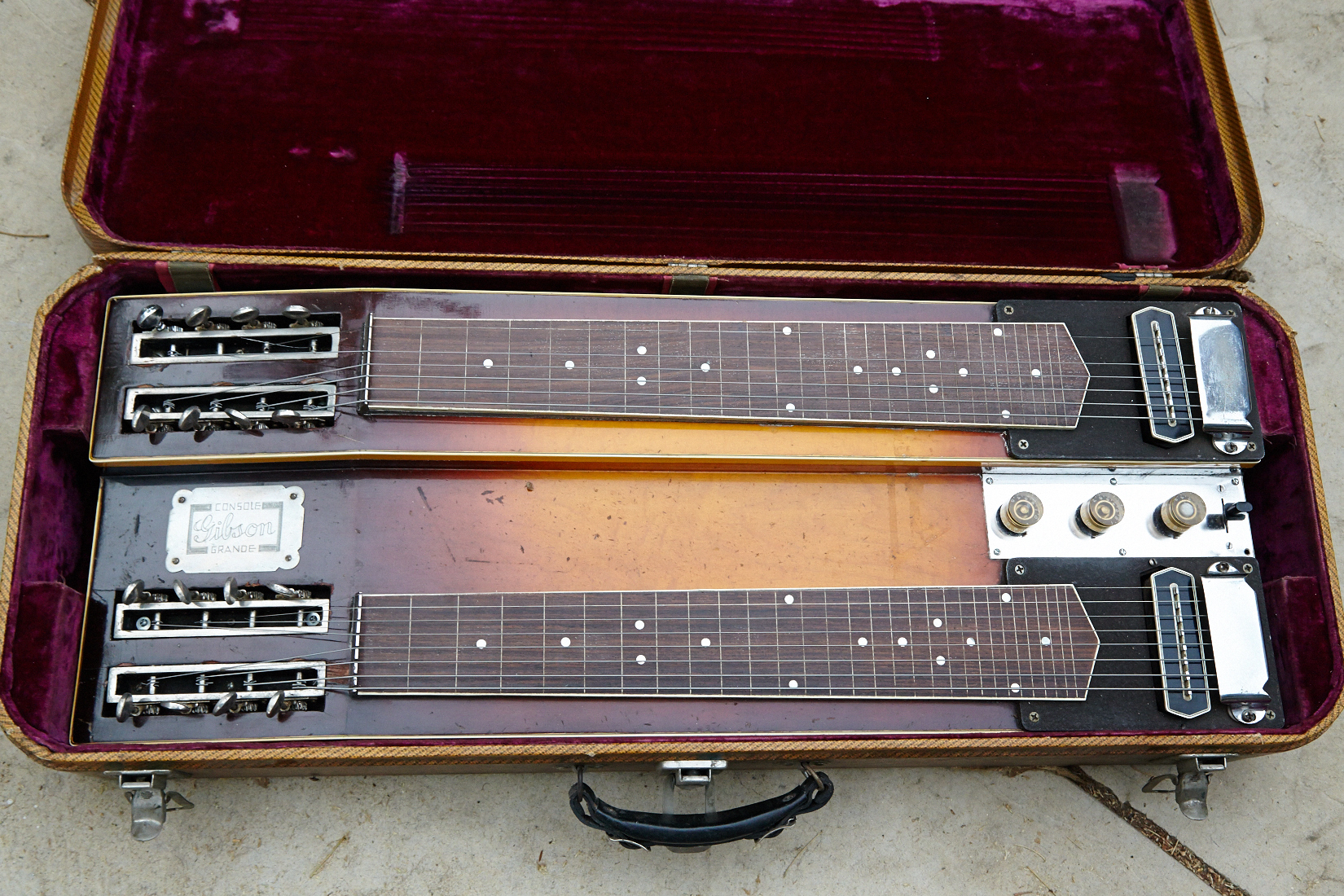
Smith owns a pair of rare Gibson Console Grand steels, including this one from the ’30s.
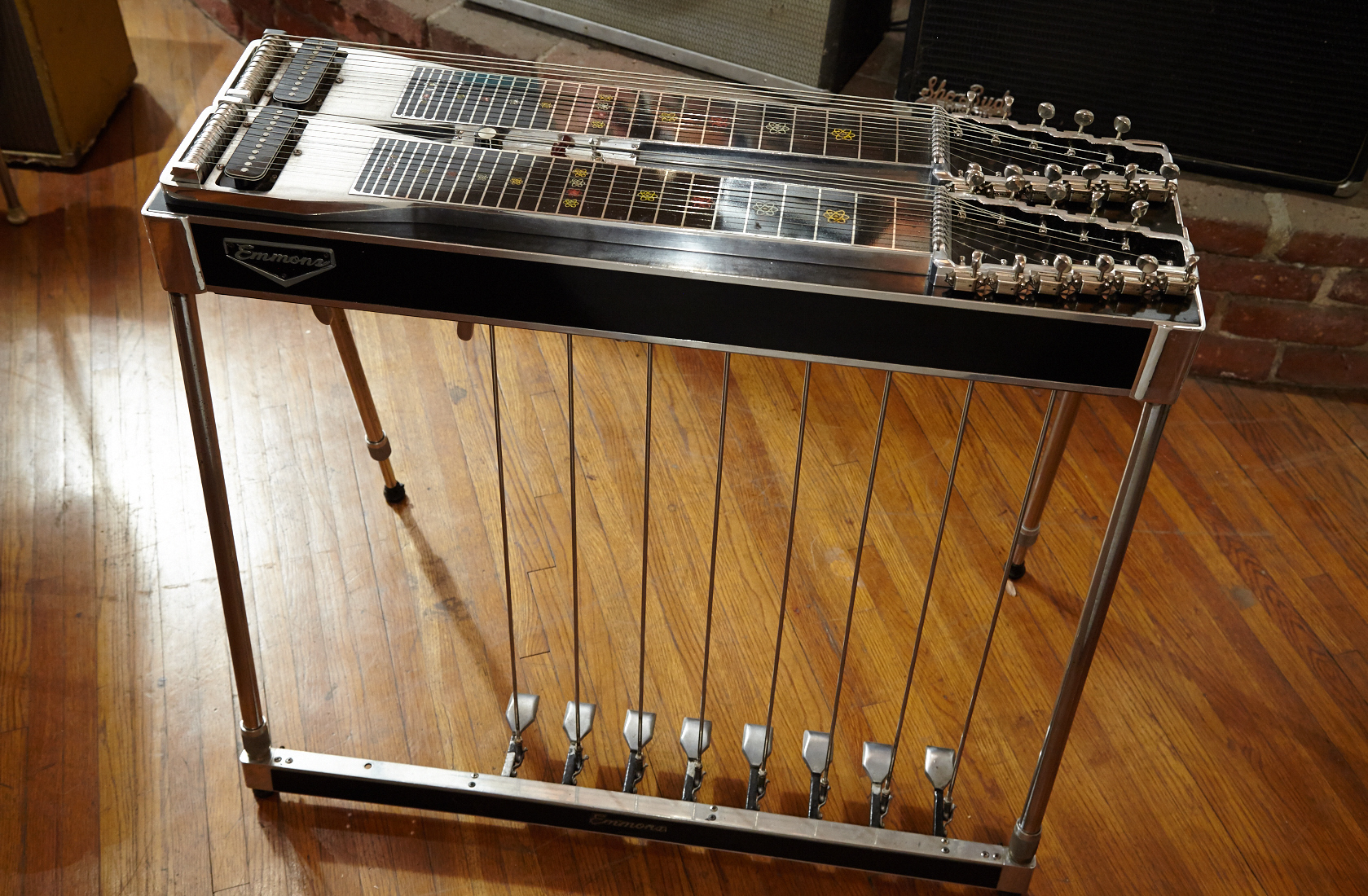
Smith owns of the two Emmons pedal steels built with double-11 string setups.
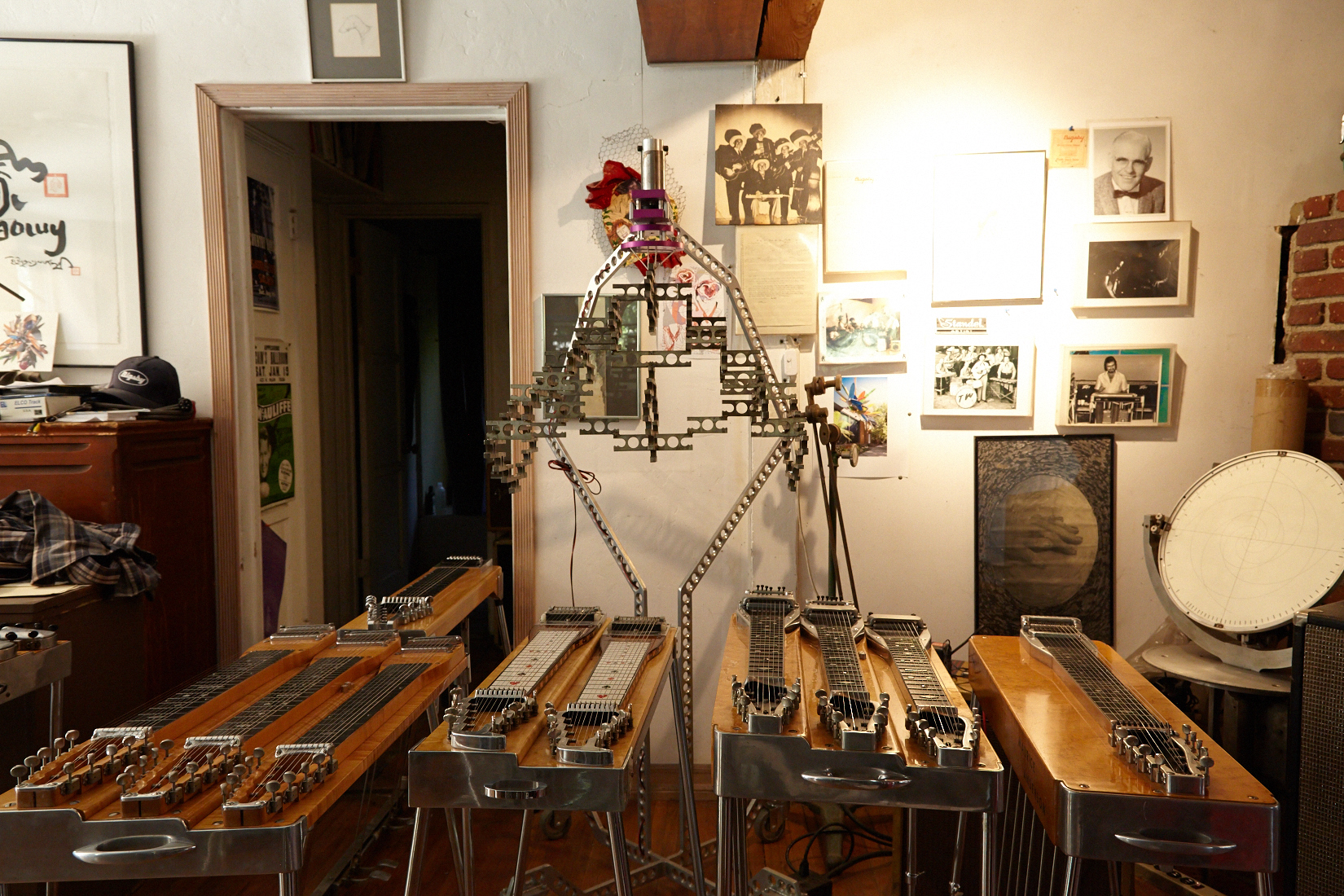
A handful of Smith’s pedal steels along with one of the sculptural instruments he’s designed.


